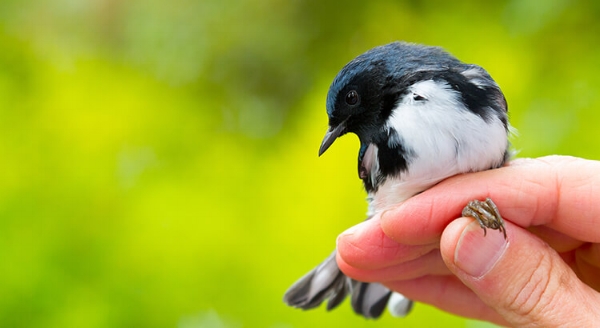This old saying could change your church forever
There is an old curious proverb that reads like this: "A bird in the hand is worth two in the bush". This piece of ancient wisdom speaks volumes as to why I believe that connecting with our guests at church, and connecting them to each other, is priority #1 if we want to see our churches grow.
Churches seem to have an ability to attract a crowd if they want to. Get a celebrity speaker, a popular band, or a sports figure, and the people will come. Add a gospel presentation and people will make decisions about trusting Jesus with their eternities and "Bam!"...the church grows, right?
Wrong. Most churches I encounter do not grow, even after successful outreach events. Why? Because the majority of churches to not have an ongoing assimilation strategy in place to connect these people, one that is simple and universally communicated by it's leaders and members.
Walk with me on this one. When churches want to grow, they have an outreach event. If they really want to grow, they have a lot of them. I think of this as "planting bushes". Birds gather in bushes. But then they fly away.
But every church that I know of has a given number of guests every weekend. Even the small ones. Churches of 100 to 200 tell me that have 3 to 7 guests per non-holiday weekend. Larger churches somewhere between 35 and 100. These are what I call, "birds in the hand".
These kind of guests are a different kind of bird. Unlike some of the birds who gather in the outreach bushes we plant, birds in our hand fall into one or more of these 3 categories:
They were invited by a friend or family member and have a pre-existing relational connection within your church.
They are experiencing a spiritual hunger brought on by life circumstances that caused them to google, research and attend your church.
They are already Christ followers and are searching for a church and they decided to visit your specifically.
Jesus told us that as we scatter seed (share his message) that there would be four different responses from people who heard it. Putting those responses from the parable of soils in assimilation terms, the following scenario unfolds:
· 1 out of 4 leave without being impacted at all.
· 1 out of 4 are very moved (even make a decision), attend for a few weeks, and then disappear.
· 1 out of 4 stay but their other priorities keep them from bearing fruit.
· 1 out of 4 bear much fruit, volunteering, giving, and sharing their faith.
Question: Which of these 4 categories do you think most of your "birds in the hand" fall into? How about your birds in the bush?
Let me put it this way. What if you were able to connect half of your guests this year and half of those you connected bore fruit (served, gave, & helped others follow Jesus)? A small church of 150 with 4 guests a weekend would grow by an average of 104 people in a year (52 of those would be volunteers). A larger church of 2000 with 30 guest per weekend church would see over 780 more people attending church, and around 390 would be bearing fruit and volunteering.
All this is based on having a simple effective assimilation strategy that can connect just half of your guests and help just one fourth of them find a place of service. These are the kind of stats I have seen as we build our connection strategy at my church.
I'm not saying that it's bad to plant bushes so birds outside your aviary can land. What I am saying is exactly what the old saying does: A bird in the hand is worth two in the bush. The guests that you have at your regular services are really like birds in your hand. They odds that you will connect with them are simply higher.
Accountability demands we look at assimilation this way. Ask yourself this question: What father would keep giving an allowance to a child that lost it every week? I believe whatever your answer is to that question, the same is true concerning the guests he entrusts to us every weekend at our services.
I am grateful to be a part of a church that has a clear assimilation strategy and works it. Don't get me wrong. It plants bushes. It does great outreach. But because we have an assimilation plan, we grow significantly when we have celebrity speakers and Christmas outreaches, but we also grow when we don't.
So let's not ignore those God will bring to our churches this weekend. Let's connect those God has placed in our hand and watch our churches grow. Let me know how I can help.
Next Post: the number one objection pastors and staff have to developing and working a strong assimilation plan.
How many guests do you think you average on a non-holiday weekend at your church? Multiply that by 52 weekends a year for a conservative estimate of the number of guests God is bringing to your church in a year. This is conservative because this doesn't include Christmas, Easter, Mother's Day etc.
Do you have a plan for connecting these people to others in your church and to meaningful service opportunities? If so, describe it. Is that plan understood by all staff and members in the same language you just used?
Could you visualize this plan enabling you to connect half of those guests this year, a fourth of them as volunteers? How? If not, what are 3 changes you could make to increase the assimilation rate at your church?




